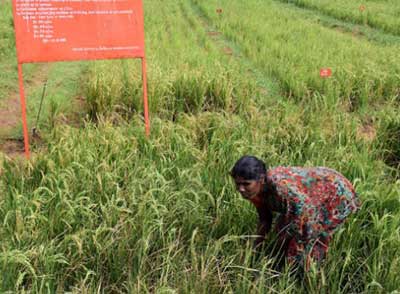Relevance: GS-3: Issues of Buffer Stocks and Food Security;
Key Phrases: ICAR, Ashok Dalwai Committee, Paroda Committee, AECI, VCI, Agriculture Education Ecosystem, remunerative farming, NAHEP, READY, ARYA;
Context
- Agriculture continues to be the main employment activity of Indians. Over 55% of people are directly or indirectly related to Agriculture.
- This stipulates that India should have a good Agriculture Education Ecosystem to make farming more remunerative and empower the people involved in the Agriculture ecosystem.
Key Highlights
Evolution of Agriculture Education (AE)
- Prevalent since ancient times
- AE was taught at Nalanda and Taxila University.
- Formal Agriculture Education in India began with 6 Agriculture
Universities (AUs)
- Kanpur, Lyallpur (now in Pakistan), Coimbatore and Nagpur in 1905,
- Pune in 1907
- Sabour in 1908
- ICAR was set up in 1929 to boost the research ecosystem.
- Today, the country has 75 AUs.
Need for Agriculture Education in Post-Independence India
- Combating Food-Insufficiency
- Colonial India had suffered many infamous famines.
- The legacy of famines and agriculture’s dependency on monsoons motivated policymakers to look into Agriculture research to find a solution.
- Developing Quality Human Resources in the field of agriculture
- This was done to meet the requirements of research into increasing productivity.
- Development in other sectors was only ensured after Food insecurity
had been tackled.
- This was seen in the 1st Five Year Plan when Agriculture got its due share in terms of Budget Allocation, and River Valley Projects.
Achievements in Agriculture and Agriculture Education
- Significant improvement in Students getting admitted to AUs
- Currently enrolling 45,000 students (9 times than in the 1960s).
- Research has led to the development of crops like
- Rice
- Drought Resistant - Vandana, Saytabhama
- Flood Resistant - Jaladhi 1, Jaladhi 2
- Wheat
- Drought Resistant - PBW 527
- Maize
- Drought Resistant - Pusa Hybrid Makka 1, Pusa Hybrid Makka 5
- Flood Resistant - HM 5, HM 10
- Rice
- ICAR has launched NAHEP (National Agricultural Higher Education Project) to attract talent to higher education
- Student READY Scheme is being run for the participation of
Students in Agri-business
- READY - Rural Entrepreneurship Awareness Development Yojana
- The practical experience of agriculture and entrepreneurship is provided to undergraduate students.
- The student fellowship for working experience to the students has been increased from Rs. 750 pm to Rs. 3000 pm.
- Arya Project has been launched
- Attracting and Retaining Youth in Agriculture (ARYA) would nudge rural youth to be empowered and remain with agriculture.
Concerns/ challenges/ issues with Agriculture Education (AE)
- Less demand for AE
- For getting admitted to undergraduate courses, AE attracted only 85 students per seat whereas Medical education attracted 50,000 applicants
- Low Gross Enrolment Ratio (GER)
- AISHE (2018-19) Report has highlighted that GER for AE is a mere 0.03% whereas for higher education it is 26%.
- Agriculture Education is the second career plan for students who failed to get selected for Medical or veterinary courses.
- AE is a state subject, which has caused variations in its working
- inadequate state funding,
- reduced faculty strength,
- basic pay to new faculty during probation period in some SAUs,
- inadequate faculty development programmes,
- lack of modern infrastructure for education and research.
- Inbreeding in Faculty Recruitment
- 51% of faculties in AUs have studied in the same college.
- The Financial Health of SAUs is precarious
- Despite the increase in the number of SAUs, the budgetary allocation to the universities has remained constant, causing falling financial share.
- AE cannot retain students in agriculture
- As per Ashok Dalwai, 30% of graduates from AUs don’t work in the agriculture sector.
- Mushrooming of Private Agriculture institutions
- Paroda Committee had highlighted this.
- These universities provide mediocre education at exorbitant high fees.
Paroda Committee
- A Committee constituted under the Chairmanship of Dr RS Paroda, in
2019 presented a report on ‘Policies and Action Plan for Secure and
Sustainable Agriculture.
The mandate of the Committee was to suggest policy reorientation and accelerated action plan for achieving sustainable agriculture for improved livelihood of smallholder farmers as well as to address the issues of poverty, hunger and malnutrition.
Way Forward
- To improve the quality of AE
- Paroda Committee recommended setting up the Agricultural Education Council of India (AECI) as a regulatory authority.
- AECI should work on similar lines as that of the Veterinary Council of India (VCI).
- AE should be revamped to suit the rapidly changing national and
international scenario.
- The aim should be to build the world’s finest ICAR-AU system and not the world’s largest ICAR-AU system.
- Bringing AE to the Concurrent list
- Since Higher Education is on the concurrent list, AE must be brought into the Concurrent list to bring uniformity in reforms.
- World Class institutes should be set up along the lines of IITs and IIMs.
- The focus should be shifted to instilling employable skills in agriculture graduates who are expected by employers in today’s competitive business scenario.
Conclusion
- Declining agriculture yield, increasing insecurities due to climate change and the calls for transforming the agriculture ecosystem will be tackled by revamping Agriculture Education. This will be necessary to achieve the dream of doubling farmers' income as suggested by the Ashok Dalwai Committee.
The Ashok Dalwai Committee, 2016
- It was set up to frame a roadmap to achieve the target of doubling farmers’ incomes by 2022.
- The report focusses on three areas — productivity gains, reduction in cost of cultivation, and remunerative prices
Source: The Hindu BL
Mains Question
Q. What are the challenges faced by Agriculture Education Ecosystem? How would it be able to transform itself to meet the challenges?








